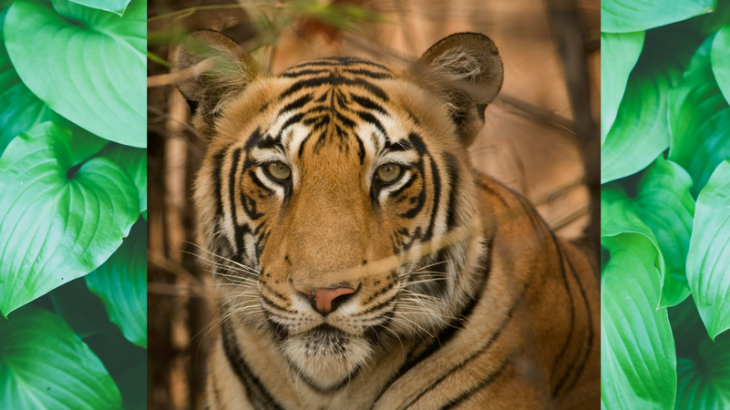Tyger Tyger, burning bright,
In the forests of the night;
What immortal hand or eye,
Could frame thy fearful symmetry?
-Blake, William. “The Tyger”.
Any piece of literature or work of art that depicts the tiger-speaks of its majesty, grace and ferocity. In present times though, the tiger has been reduced to playing the part of the victim as the drama of deforestation and anthropogenic climate change unfolds. The Global Tiger Recovery Program, initiated in 2010, had found that in the past century alone a population of 100,000 tigers across 13 tiger range countries in Asia (including India) had been reduced to a mere 3,200. This is an alarming statistic considering the dwindling tiger population is also symptomatic of the impoverished state of our forests.
In a study co-authored by Dr John Seidensticker and of the Smithsonian Conservation Biology Institute titled “A Landscape-Based Conservation Strategy to Double the Wild Tiger Population” published in 2011, Dr John Seidensticker has contended that “tiger conservation is the face of biodiversity conservation and competent sustainable land-use management at the landscape level.” The study focuses on the importance of creating habitat corridors between tiger reserves in order to allow tiger population recovery and recolonization.
In a project undertaken by Grow-Trees.com to revitalise the wildlife corridor between Kanha National Park, Madhya Pradesh and Pench National Park, Maharashtra, 300,000 trees were planted in partnership with Vodafone India Ltd. The wildlife corridor between these two prominent tiger reserves in India will facilitate the dispersal of tiger populations in these regions resulting in greater genetic diversity and a higher tiger population. Trees that grow locally in the region include Amla, Baheda, Bamboo, Harra, Imli, Karanj, Khamer, Mahua, Saja, Sisu, Subabul, Amal, Arjun, Aam and Jamun. Grow-Trees.com strives to plant only those trees that grow organically in the agro-climatic conditions of the region.
In 2005, a steady decline in the tiger population in Sariska Tiger Reserve in Alwar, Rajasthan had prompted the Indian government to transport tigers by helicopters in order to revive the tiger population in this region. In an initiative to preserve the habitat of the tiger by reducing the conflict between human settlements and wildlife habitats, Grow-Trees.com has successfully planted 266,769 trees around the Sariska Tiger Reserve to bolster the periphery of the Reserve with 300, 000 trees as the target. Out of the trees already planted, 1,00,000 were planted in partnership with Tata Capital Ltd. Local tree species including Indian Plum, Neem, Salai, Sahajan, Sasbania, Babul, Sheesham, Lemon, Papaya, and Amla that grow naturally around the Reserve, have been planted and another 15, 000 have been supported by the Ingenico Group. An indicator of the success of this particular project has been the appearance of relocated tigers ST6 and ST10, as reported by the forest department, around the area of the project site.
Similarly, our project on the Periphery of the Sundarbans National Park in West Bengal aims to preserve the habitat of the Royal Bengal Tiger, a man-eating tiger species that is found only in this part of the world! The target for the Sundarbans this year is 250, 000 trees which will aid the unique aquatic ecosystem that is supported by the endemic mangroves, improve the fisheries catch for rural communities that depend on it for livelihoods and help in disaster mitigation at the time of flooding or at the occurrence of a tropical storm or cyclone which this region is prone to.
At Grow-Trees.com, the efforts to protect the habitats of the tiger is seen as a way to accomplish other socio-development challenges as well such as creating livelihoods in the communities living around forests that are dependent on forest-based industry for their subsistence and income. This is achieved by ensuring that we grow local varieties of trees and engage the community through participation in the planting process and training on the judicious use of forest resources. Wildlife conservation, fostering social-economic growth, preserving plant and tree species and saving and creating water resources are all interconnected and working on even of these causes has positive effects on the others as well.
